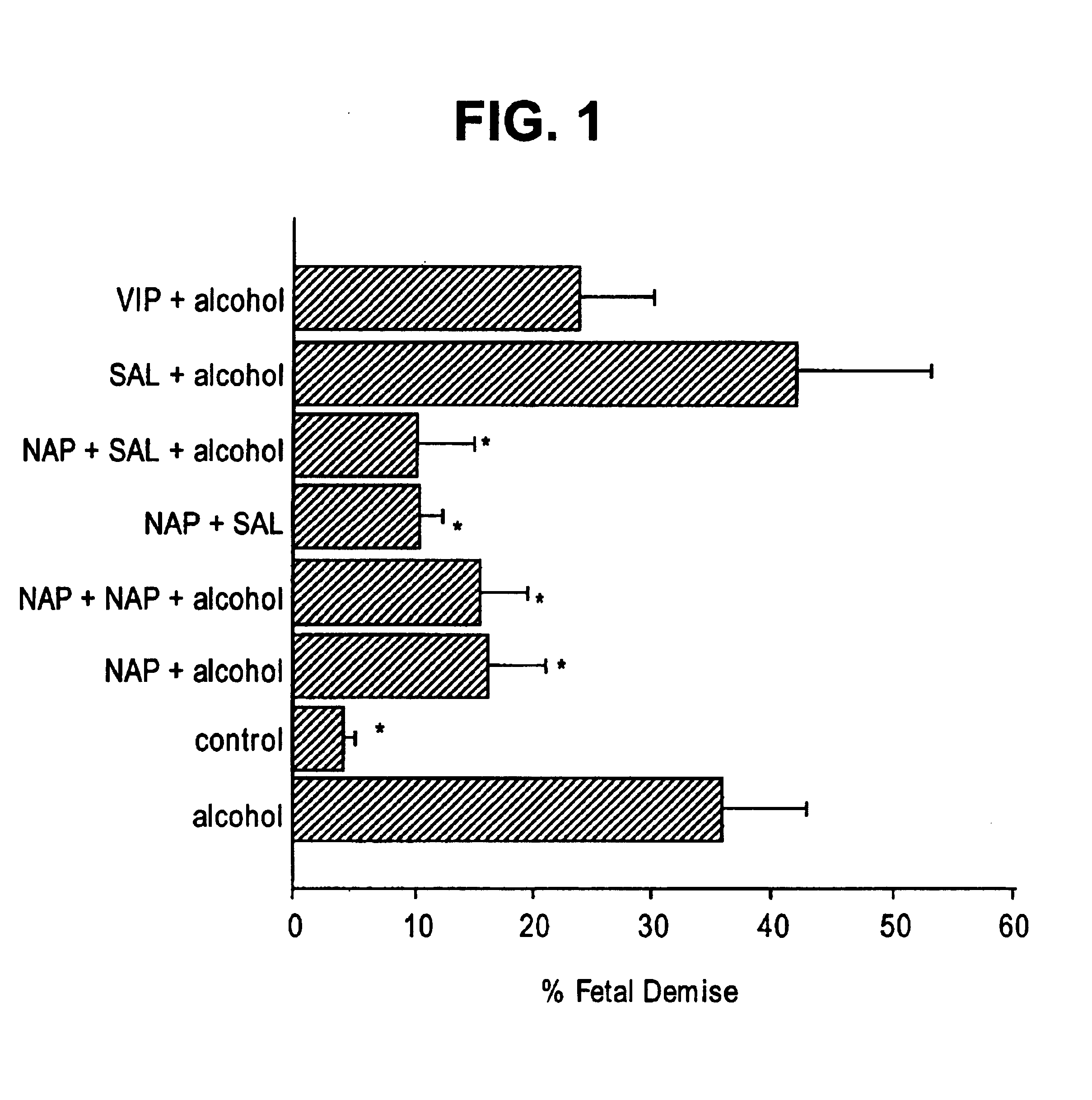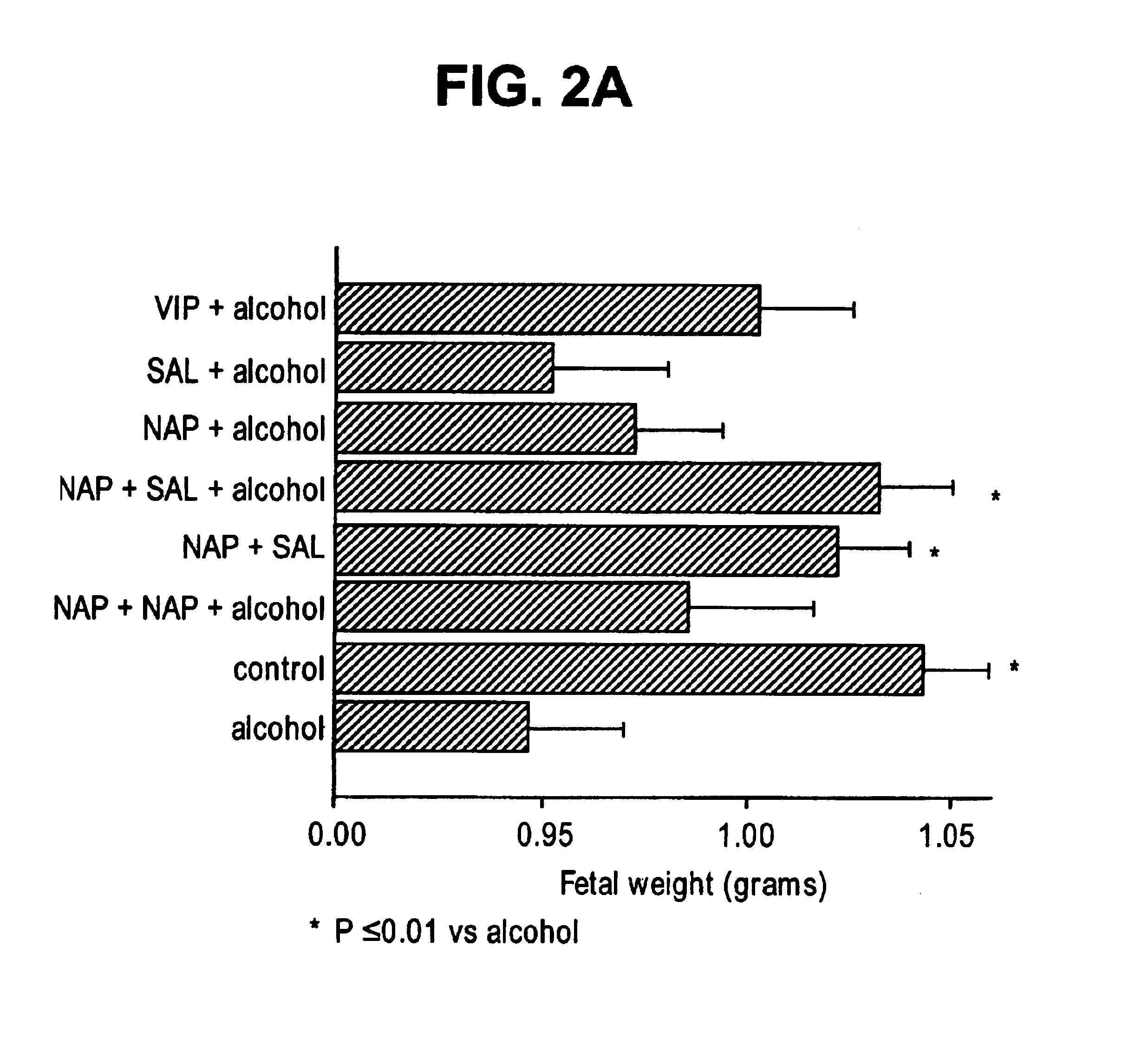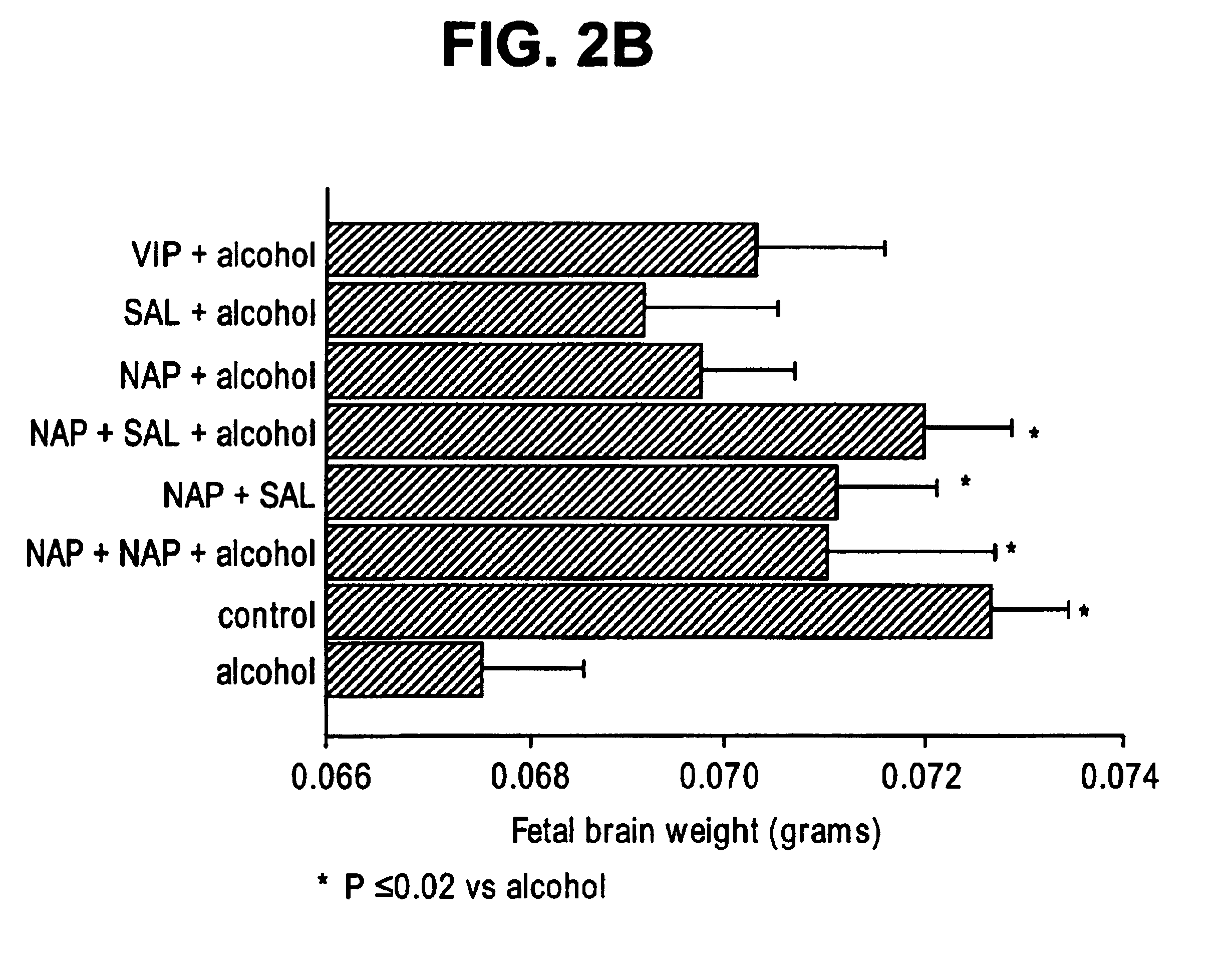Prevention of fetal alcohol syndrome and neuronal cell death with ADNF polypeptides
a technology of fetal alcohol syndrome and polypeptides, which is applied in the direction of peptide/protein ingredients, antibody medical ingredients, peptide sources, etc., can solve the problems of reducing or preventing a condition associated with fetal alcohol syndrome, and achieve the effect of reducing neuronal cell death
- Summary
- Abstract
- Description
- Claims
- Application Information
AI Technical Summary
Benefits of technology
Problems solved by technology
Method used
Image
Examples
examples
I. Materials and Methods
[0127]A. Animals
[0128]C57-B16J female mice (Jackson Labs) were kept under a 12 h light, 12 h dark regimen with food and water available at all times. The mice received humane animal care in compliance with the “Guideline for Care and Use of Experimental Animals.” Six week old females (21-24 grams) were mated with C57-B 16J males for 4 h. The presence of a vaginal plug was considered day 0 pregnancy.
[0129]B. Treatment Groups
[0130]A published well-delineated model for FAS was followed (Webster, W. S., et al., Neurobehav Tox, 2:227-34 (1980)). Animals were injected (intraperitoneal) on E8 with 255 ethyl alcohol in saline (v / v) or vehicle alone at 0.030 ml / g body weight. Pretreatment with VIP and ADNF peptides (NAPVSIPQ (SEQ ID NO:2), SALLRSIPA (SEQ ID NO:1), NAPVSIPQ (SEQ ID NO:2)+SALLRSIPA (SEQ ID NO:1)) were given 30 min prior to alcohol. Dosages of the neuropeptides were NAPVSIPQ (SEQ ID NO:2) (20 μg) and (40 μg), SALLRSIPA (SEQ ID NO:1) (20 μg), NAPVSIPQ (SE...
PUM
| Property | Measurement | Unit |
|---|---|---|
| molecular weight | aaaaa | aaaaa |
| Tm | aaaaa | aaaaa |
| temperature | aaaaa | aaaaa |
Abstract
Description
Claims
Application Information
 Login to View More
Login to View More - R&D
- Intellectual Property
- Life Sciences
- Materials
- Tech Scout
- Unparalleled Data Quality
- Higher Quality Content
- 60% Fewer Hallucinations
Browse by: Latest US Patents, China's latest patents, Technical Efficacy Thesaurus, Application Domain, Technology Topic, Popular Technical Reports.
© 2025 PatSnap. All rights reserved.Legal|Privacy policy|Modern Slavery Act Transparency Statement|Sitemap|About US| Contact US: help@patsnap.com



